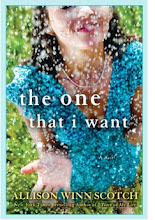So...are any of you guys as close to vomiting as I am? If I see one more Kit Kat around my house, I'm going to lose it. Unfortunately, my husband insisted that we didn't have nearly enough candy (most likely because he'd eaten half of it), and now I'm saddled with a two-month supply of mini-candy bars. Which normally, wouldn't be such an issue, but this present moment, after eating 50 of them in the past 12 hours, means that I might barf.
Anyhoo, following up to yesterday's "how to break in" question, we're rolling on to query letters, which many of the freelancers suggested are the key to knocking down new doors. So, along those lines:
Today's question: How do I write a kick-ass query letter?
-Know the magazine and know the section that you're pitching. If possible, know something about the editor--for example, I've found that some editors want long queries, but some, even if they're new-to-you, only want a couple of paragraphs. Make sure it's engaging. The query should grab the reader by the scruff of the neck in the first paragraph and make the person want to keep reading to see what happens. - Michele Wojciechowski, Maryland-based freelance writer and humorist. To receive her weekly humor column, Wojo's World (tm), via e-mail, contact her at MWojoWrites@aol.com
- The key to writing a kick-ass query letter is to leave the editor saying, "Wow -- this writer not only knows my magazine but she cares enough to send a query that will leave me with no unanswered questions." The editor should be able to visialize the layout of the article by the time he/she has finished reading the query. One thing, though, that comes with experience, is to know the questions that editors will ask. For instance, if I am pitching a medical topic, the first thing I will be asked is if there are any new studies or findings on the topic or if there is a new book coming out. Also, a query should be written in the voice of the magazine. For instance, a query I send to Women's Health is going to have a tone different than a pitch for the health section of Woman's Day. - Sharon Anne Waldrop, contributor to Parents, Parenting, Health, Women's Health, Glamour, Alternative Medicine, For Me, and All You
- Model it on the stories you see printed. Think of a great cover line; that's your title. Even if that title doesn't get used, at least you're thinking about it, and that will be noticed. - Sandra B. Hume
-Making sure you read it out loud before hitting the “send” button. (Yes, I query by email pretty much 99% of the time.) Also, remembering those old tents of journalism—the five Ws and the H—and ensuring that your query includes them all. Finally, being clear about why this query is right for X magazine and why now. - Leah Ingram, http://www.giftsandetiquette.com
- A great intro gets the editor to keep reading. For me, that means writing in the voice of the magazine, and doing something that hasn't been done a zillion times before. Also, I always include any relevant research, so the editor knows I've done my homework on the topic, and I outline who my experts will be so the editor knows I know what I'm doing. - Camille Noe Pagan, camillenoepagan, contributor to Glamour, Health and Prevention, among others
- I think a query letter will give your editor a sense of your style.. so make it look good. I dont write long letters - just quick and to-the-point letters with relevant information. In some cases, it makes sense to interview a few sources before hand to get some good quotes. - Monica Bhide, monicabhide.com, contributor to AARP-The Magazine, Health, Food & Wine, Cooking Light, Town& Country Travel, Departures, Washington Post and the New York Times
- I say this from an editor's perspective: a kick-ass story idea would have a hook that would only fit in that magazine. It would have a title and a deck, and maybe even a coverline. It would be written in a style that matches the magazine. - Denise Schipani, author of the Mommy Confidential column in American Baby, and contributor to Parents, Parenting, Parent & Child, Women's Health, Woman's Day, and Redbook, among others.
- Know your audience, know your query (e.g. don't be wishy washy), and include concrete examples. This might mean doing research before you pitch, but it'll pay off. - Jen A. Miller, jenamiller.com
- Show the editor how you’d approach the piece. Find new information, research or trends. Tell her something that she doesn’t know, or that her readers need to know. Write a killer lede. (If it’s good enough, you might have just saved yourself some work on the piece.) The more work you put into the query letter, the easier you make it for the editor to decide whether this is a good piece for her – and whether you’re the writer to take it on. - Gwen Moran, gwenmoran.com, contributor to Woman's Day, Family Circle and Entrepreneur, among others
Wednesday, November 01, 2006
Subscribe to:
Post Comments (Atom)

2 comments:
I've seriously been THISCLOSE to puking for the past three days. I am staying FAR AWAY from all the leftover candy everyone brings to work!
I only bought candy I hate because I'm going to Florida in two weeks and have to put on a bathing suit again. Scary. Very scary. Now, if I could just stay away from my kids candy, I'll be fine.
Post a Comment